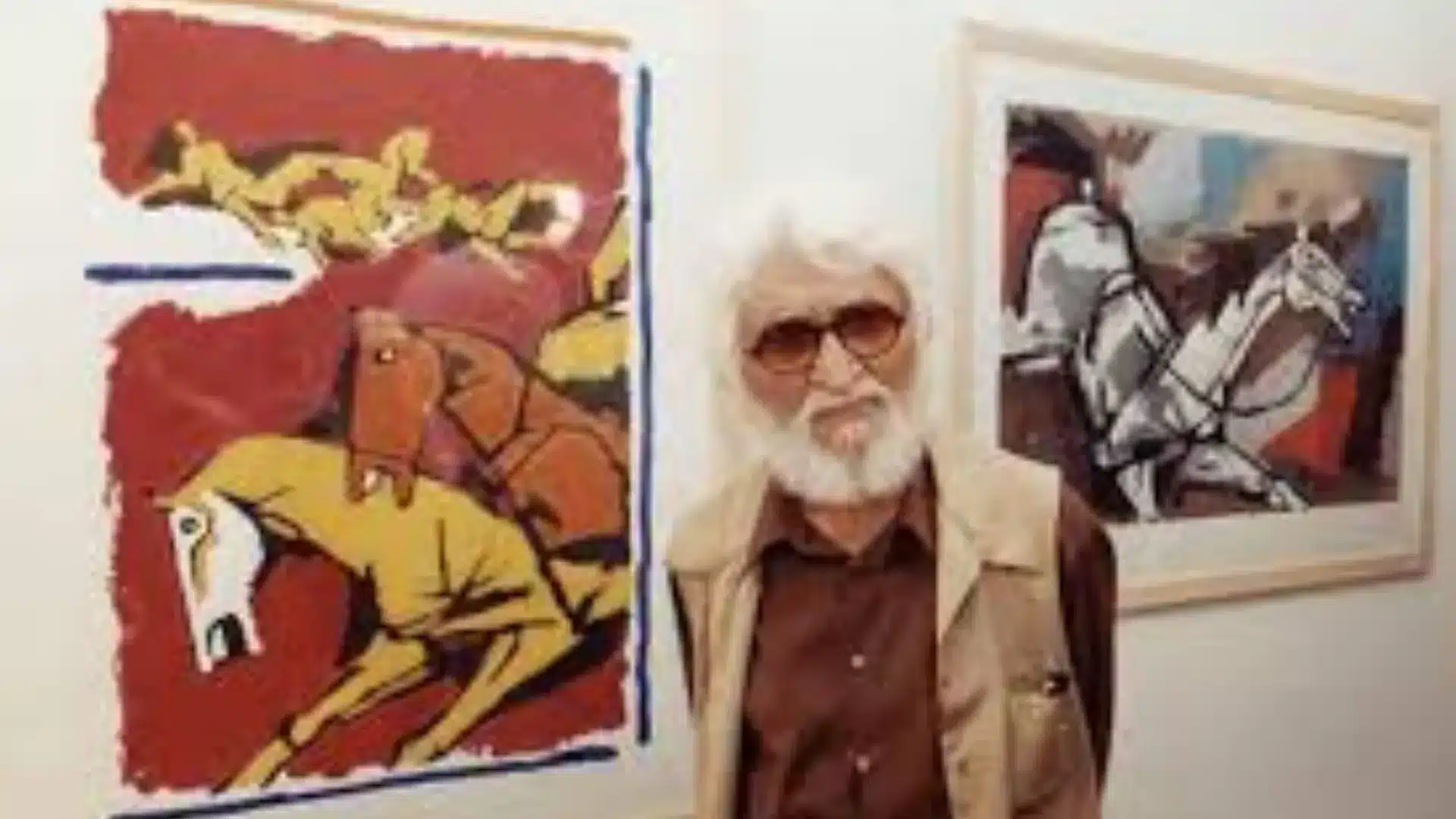Controversy Surrounds MF Husain’s Art in Delhi

A recent court ruling in Delhi has reignited the debate over artistic expression in India. The court has ordered the seizure of two paintings by the late artist MF Husain, known for his provocative depictions of Hindu deities. This decision follows a complaint that claims the artworks hurt religious sentiments. The controversy surrounding Husain’s work is not new; it reflects a long-standing tension between artistic freedom and religious sensitivities in India.
Court Orders Seizure of Paintings
On Monday, a judge at Delhi’s Patiala House Courts granted police permission to seize two paintings by MF Husain. The artworks were part of an exhibition titled “Husain: The Timeless Modernist,” which showcased over 100 of his works at the Delhi Art Gallery (DAG) from October 26 to December 14. The complaint was filed by lawyer Amita Sachdeva, who alleged that the paintings, which feature Hindu deities Ganesha and Hanuman alongside nude female figures, were offensive.
Sachdeva took action after photographing the paintings on December 4 and conducting research on previous complaints against Husain. She filed a police complaint five days later. On December 10, she visited the gallery with an investigating officer, only to find that the paintings had been removed. Gallery officials claimed they had never exhibited the controversial works. The police have since accessed CCTV footage from the gallery to investigate the matter further.
MF Husain: A Legacy of Controversy
Maqbool Fida Husain, often referred to as the “Picasso of India,” was one of the country’s most celebrated artists. His career, however, was marked by controversy. Husain faced backlash for his bold depictions of Hindu gods, often portrayed in nude forms. In 2006, he publicly apologized for a painting titled “Mother India,” which depicted a nude woman forming the shape of the Indian map. This incident led him to live in self-imposed exile in London until his death in 2011.
Despite the controversies, Husain’s works have sold for millions of dollars. His art often challenged societal norms and provoked discussions about the intersection of culture and religion. In 2008, India’s Supreme Court dismissed calls for criminal proceedings against him, stating that nudity is common in Indian iconography and history. The court condemned the rise of “new puritanism” in India, emphasizing the importance of artistic expression.
Rising Concerns Over Artistic Freedom
The recent court ruling has sparked concerns about the growing intolerance towards artistic expression in India. Many believe that there is a rising tide of illiberalism that threatens the freedom of artists to explore complex themes. The Delhi Art Gallery has stated that it is reviewing the situation and seeking legal advice. The gallery is not a party to the legal proceedings but is closely monitoring developments.
In October, the Bombay High Court reprimanded the customs department for seizing artworks by renowned artists FN Souza and Akbar Padamsee, labeling them as “obscene material.” The court ruled that not every nude or sexually explicit painting qualifies as obscene, highlighting the need for a nuanced understanding of art. This ruling reflects a broader concern about censorship and the limitations placed on creative expression in contemporary India.
As the debate continues, the case of MF Husain serves as a reminder of the delicate balance between artistic freedom and cultural sensitivities. The outcome of this legal battle may have lasting implications for artists and the art community in India.
Observer Voice is the one stop site for National, International news, Sports, Editor’s Choice, Art/culture contents, Quotes and much more. We also cover historical contents. Historical contents includes World History, Indian History, and what happened today. The website also covers Entertainment across the India and World.
Follow Us on Twitter, Instagram, Facebook, & LinkedIn

